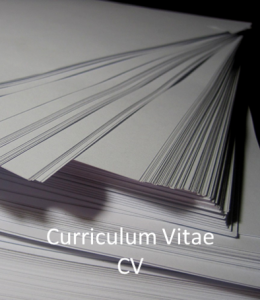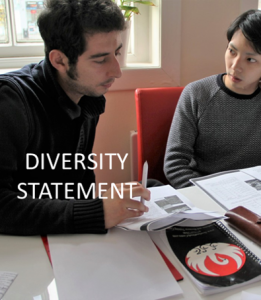The cover letter serves as an introduction to your application package and answers the following questions: Who are you? When will you defend your dissertation (if you’re currently ABD)? Why are you interested in applying for this assistant professor position? Why are you interested in this institution? What is your dissertation research about? What are your research plans? What kind of teaching experience do you have? How will you contribute to our department and institution? Why is the school a good fit for you and vice versa? A strong cover letter will be tailored to the institution to which you’re applying. For the humanities and social sciences, it is typically two to three pages long, and for STEM fields, it is typically one to two pages but will vary depending on the specific discipline.
The purpose of a cover letter
Sometimes called a “letter of intent” or “letter of interest“, a cover letter is an introduction to the rest of your job application materials. The purpose of a cover letter is to quickly summarize why you are applying to an organization or for a particular position, and what skills and knowledge you bring that make you the most suitable candidate for that position. The cover letter is often the first impression that a prospective employer will have of you, especially if they do not know you, or have not heard about you from their network of contacts. First impressions count, and so getting your cover letter right is a critical step in your job application process. Like all your job application materials, it may take time and focus to write your cover letters well. You will likely have several drafts before you come up with a final version that clearly articulates your skills and your understanding of the employer and the job requirements.
While your CV briefly states your skills, knowledge, experience, and (most importantly) what you have achieved using your abilities, the cover letter gives you an opportunity to create a narrative that shows the path you have taken in your career or education, emphasizing the skills you’ve used along the way, and explaining why the position you are applying to is the next desirable step on this path.
Timeline: Getting Started with your Cover Letter
Step 1: The first step to writing a good cover letter is to first have a good CV. Your cover letter expands upon some of the information you include within these documents, and describes the role you have played in achieving your academic goals (i.e., showing how your experiences have made you the best candidate for the position).
Step 2: The next step is to find an open position that interests you. There is no such thing as a one-size-fits-all cover letter, as each should be tailored to each job you apply to, but there will certainly be parts of the letter that will stay much the same, and be appropriate for multiple jobs. A 1-3 page cover letter might be the norm when applying for a tenure-track, faculty position, but you need to check with your own department to find out what the norms are in your field.
Step 3: Go through the job ad and carefully note all of the requirements and skills the employer is looking for. Based on your background research of the employer and the people you have spoken to who know about this employer (whether a business or a university department), try to identify the two or three most important skills that the employer is looking for. You should then try to create a cover letter that illustrates that you have these skills and have used them effectively.
When applying for faculty positions, especially those that involve both teaching and research, you will be expected to spend some time in your cover letter talking about your research and goals, as well as your teaching – even though you may have covered these in more detail in your research statement and teaching philosophy documents. How much time you need to spend talking about teaching and research will depend on the nature of the position and your field of study. For some humanities and social sciences applications, you will not be asked for a separate research statement, and this information will need to be integrated into the cover letter. Cover letters for scientific positions will generally be shorter as more (but not all) of the information about research will be covered in the research statement. Academic letters also need to cover everything that non-academic cover letters address, however, because you need to show that you are not only a good academic, but that you are a good person to work with who is committed to working at that particular institution. Make sure that you address the requirements of the position as stated in the job ad. Speak to faculty in your department to get a sense of what is expected in cover letters used in faculty job applications for your discipline. See if any faculty you know have been involved in search committees, and find out what they looked for in cover letters.
|
Science PhD cover letter |
Linguistics PhD cover letter |
History PhD cover letter |
Art history PhD cover letter |
|
Spanish PhD cover letter |
Science PhD cover letter (postdoc) |















